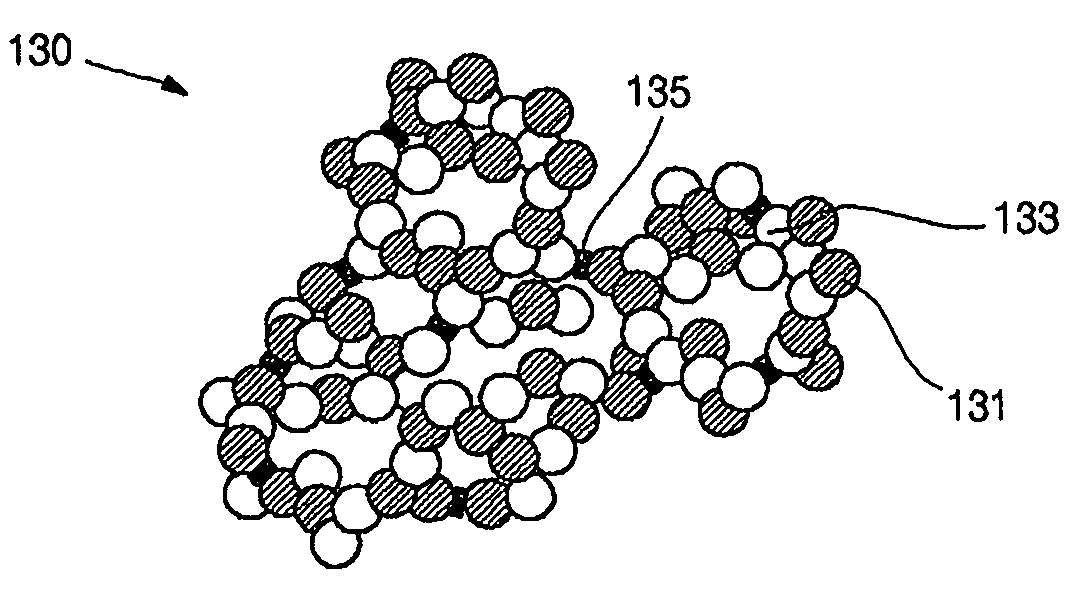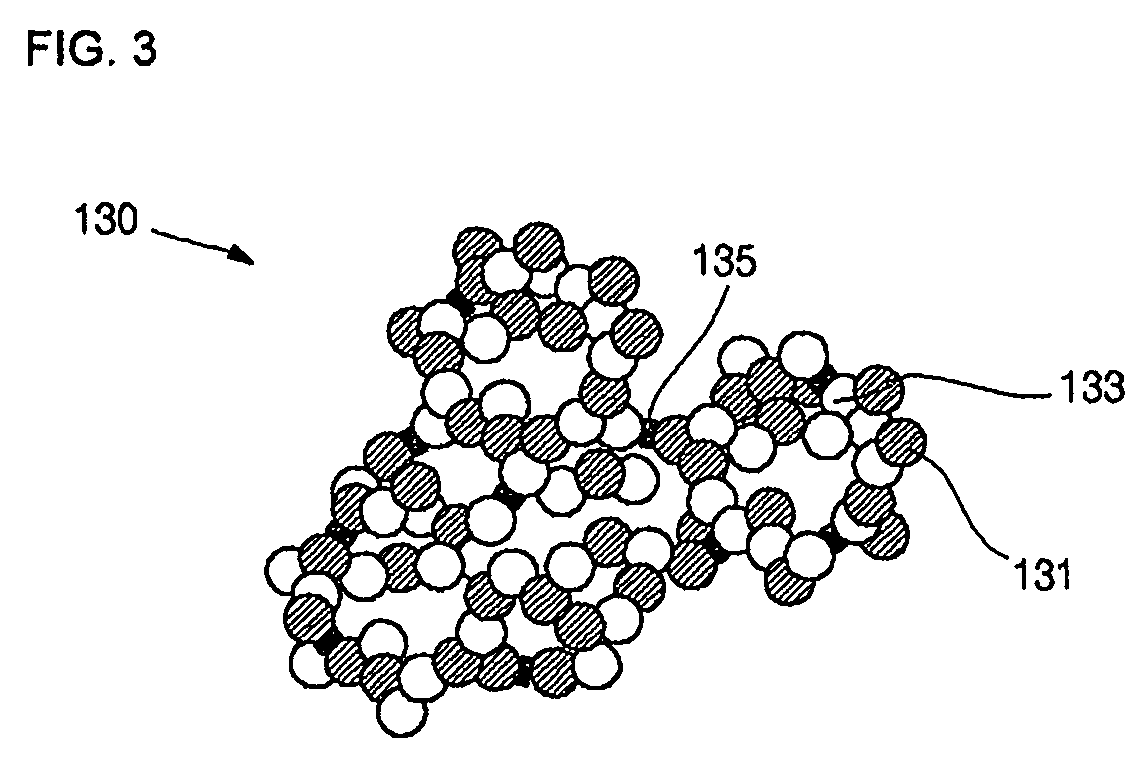Lithium secondary battery
a lithium secondary battery and electrode assembly technology, applied in the direction of non-aqueous electrolyte cells, cell components, sustainable manufacturing/processing, etc., can solve the problems of limited electrode facing area, limited current in the battery and battery output, significant internal voltage drop, etc., and achieve the effect of increasing internal ion-conductivity
- Summary
- Abstract
- Description
- Claims
- Application Information
AI Technical Summary
Benefits of technology
Problems solved by technology
Method used
Image
Examples
Embodiment Construction
[0030] Reference will now be made in detail to the present embodiments of the present invention, examples of which are illustrated in the accompanying drawings, wherein like reference numerals refer to the like elements throughout. The embodiments are described below in order to explain the present invention by referring to the figures.
[0031] Typically, in order to manufacture a secondary battery as shown in FIG. 1, two electrodes 21 and 23 having activation materials on their charge collectors are first provided. Then, electrode taps 27 and 29 are connected to uncovered portions where the activation material does not cover the charge collector. A separator 25 is interposed between the two electrodes 21 and 23 to prevent a short circuit. A resulting layered structure of the electrodes and the separator is wound to provide a jelly roll type electrode assembly 20. The electrode assembly 20 is inserted into a can 10 having an opening, and the opening is covered with a cap assembly 80,...
PUM
| Property | Measurement | Unit |
|---|---|---|
| electrolysis voltage | aaaaa | aaaaa |
| temperature | aaaaa | aaaaa |
| thickness | aaaaa | aaaaa |
Abstract
Description
Claims
Application Information
 Login to View More
Login to View More - R&D
- Intellectual Property
- Life Sciences
- Materials
- Tech Scout
- Unparalleled Data Quality
- Higher Quality Content
- 60% Fewer Hallucinations
Browse by: Latest US Patents, China's latest patents, Technical Efficacy Thesaurus, Application Domain, Technology Topic, Popular Technical Reports.
© 2025 PatSnap. All rights reserved.Legal|Privacy policy|Modern Slavery Act Transparency Statement|Sitemap|About US| Contact US: help@patsnap.com



